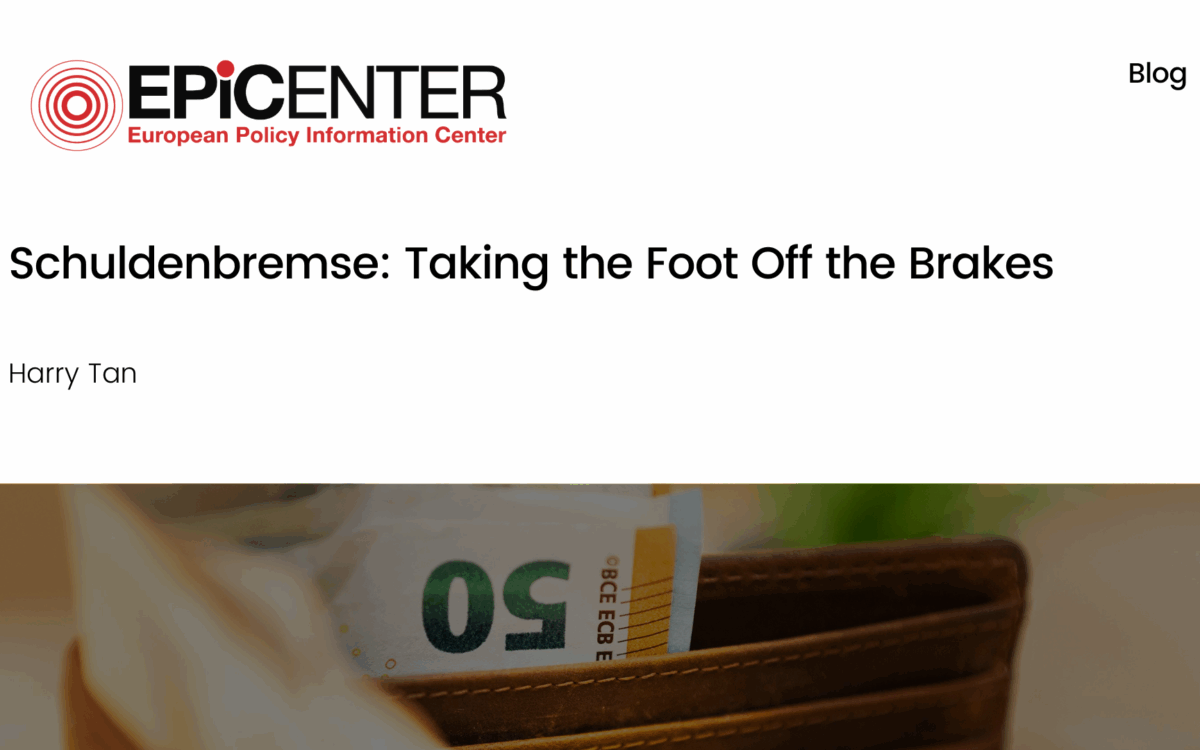The Robot Tax: A Levy on Innovation, Growth and Job Opportunities

The Robot Tax: a Levy on Innovation, Growth and Job Opportunities
Caroline Burleigh // 16 May 2017
During his recent electoral campaign, the defeated socialist French presidential candidate, Benoît Hamon, repeatedly hinted at a potentially radical proposal: To impose a tax on robots. This idea was justified by the argument that the proliferation of automation will soon destroy human employment. Hamon’s prime proposal consists of a 750€ monthly universal basic income for the French. Although such a monthly income would be well below the French poverty line, it would be extremely costly to finance. Therein lies the logic to impose yet another tax on companies to fund the proposal – primarily the so-called “robot tax”.
Originally, Mady Delvaux, a Luxembourg MEP (S&D), established the link between a universal basic income and a tax on automation, in a 2016 draft report submitted to the European parliamentary Committee on Legal Affairs. In her report, Ms. Delvaux recommended that companies disclose the impact of automation on their economic output “for the purpose of taxation and social security contributions”. In addition, she argued that “in light of the possible effects on the labour market of robotics and artificial intelligence, a general basic income should be seriously considered”. According to her proposal, companies making use of ever-smarter machines, which are outperforming human workers, should be taxed in order to redistribute the ensuing funds to the victims of said innovation. Considering the former, Ms. Delvaux declaring herself an ‘advocate of innovation’ appears quite contradictory. There are more sensible ways to properly tackle the fears and worries of workers, than to base a far-reaching policy proposal on unfounded, common assumptions.
In fact, there is sufficient evidence to contradict the robot tax claims: Guido Matias Cortes of Manchester University in the U.K, Nir Jaimovich of the University of Southern California and Henry Siu of the University of British Columbia have spent years studying the decline of so-called routine jobs. Routine jobs, which consist of a narrow set of specific activities performed by following well-defined instructions, can be manual (e.g. operating a forklift) or cognitive (e.g. secretarial work). In 1979, 40.5% of the U.S. working population held such jobs. In 2014, a mere 31.2% of working Americans held routine jobs. Which factors can account for this substantial decline?
There has been a considerable shift of high-school educated routine workers to non-routine manual jobs, such as waiters, retail, and security guards. This type of non-routine manual employment has visibly increased over the years. Nonetheless, it would be overly simplistic to posit that automation has driven less-educated workers into either unemployment, or the service sector. Cortes, Jaimovich and Siu’s findings challenge this common assumption. Although automation does partially account for the trends observed among the less-educated workforce, other factors are crucial as well: The growing proportion of highly-skilled workers and their occupational choices, the outsourcing of production, and social policy changes that may create disincentives to accept low-paid jobs, have all contributed to recent labour market trends.
Leonid Bershidsky posits that a robot tax is a bad idea, considering it would deter companies from investing in further innovation, and hence decrease competitivity. Instead of penalising innovation, he suggests promoting growth in the service sector, and non-routine manual jobs. This would ensure the sufficient availability of decently paid jobs for less-educated individuals, as opposed to relying on social welfare. Bershidsky concludes that less-educated workers are not inevitably doomed to become victims of the technological revolution – what they need is attractive alternatives, rather than ‘handouts’.
Likewise, Daniel Lacalle argues that the widespread belief that technology companies are a threat, and robots will take our jobs is a fallacy. There is sufficient empirical evidence to underline that technology creates more jobs than it destroys: Indeed, a recent Randstad study shows that in Spain alone more than 1.25 million new jobs will be created over the next five years, thanks to technology. The German region of Bavaria is a prime example of how the technological revolution has created, not only more, but also better remunerated jobs over the past thirty years. With an exceptionally low unemployment rate of only 2.6%, Bavaria also boasts a high degree of technologisation and robotisation. Furthermore, it is relevant to note that many of the jobs we know today did not exist ten or twenty years ago. Yet, this is not a sign of the destructiveness of technology, but an indication that technology promotes the transfer of capital from obsolete sectors to more productive ones, all the while creating new forms of employment. Lacalle equates the robot tax to ‘putting barriers to progress, by penalising the efficient and hence perpetuating obsolete sectors under the excuse of employment’. In other terms, it is no solution to the issues faced by the workers formerly employed in now automated sectors.
A similar, free-market, alternative to today’s universal basic income was introduced by economist Milton Friedman in his 1962 book ‘Capitalism and Freedom’: the negative income tax (NIT). One of Friedman’s fundamental underlying ideas was the possibility to ultimately abolish the existing welfare system. Those in need of aid would file annual – or quarterly – income returns with the Internal Revenue Service (IRS). However, instead of making payments like wealthier filers, they would receive so-called ‘negative taxes’ from the IRS, depending on how far their incomes fell below the threshold for tax liability. To avoid disincentives to labour market participation, benefits would vary inversely with income, according to a benefit-reduction schedule. For instance, if the threshold for tax liability for a household of four was $10.000, a family with an annual income of only $8000 would receive $500 worth in benefits, if a negative tax rate of 25% were in place (25% of the $2000 difference between its $8000 income and the $10.000 threshold). Likewise, a household with no income at all would receive $2500.
Whether one is in favour of Friedman’s NIT proposal or not, politicians and the general citizenry should start considering that technology and the democratisation of information have generated global prosperity, new employment opportunities, and have a high potential to continue to do so in the future. Perhaps we should regard innovation-hindering policies such as the robot tax more critically, instead of scapegoating innovative technology companies. Perhaps the abovementioned politicians should consider investing more in tax breaks to innovative companies, and less in subsidies to unproductive sectors. High-tech companies can be the guarantors and leaders of much needed change and growth, if only politicians stop targeting them with novelty taxes.
EPICENTER publications and contributions from our member think tanks are designed to promote the discussion of economic issues and the role of markets in solving economic and social problems. As with all EPICENTER publications, the views expressed here are those of the author and not EPICENTER or its member think tanks (which have no corporate view).



